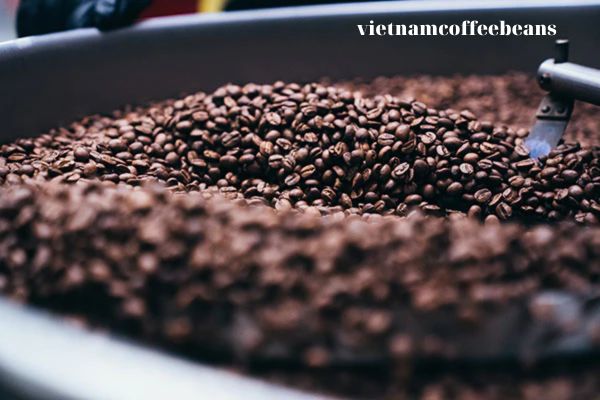
I love my morning cup of coffee. The aroma, the taste, and the energy it provides are all essential to starting my day on the right foot. But have you ever wondered what makes your coffee taste so different from one brand to another?
It all comes down to the type of bean used: Robusta or Arabica. Robusta and Arabica are two types of coffee beans that differ in flavor, caffeine content, and cultivation requirements.
These two varieties make up nearly all of the world’s coffee production and each has its unique characteristics that can impact your daily cup of joe. By knowing the coffee bean varieties and their differences, you can appreciate the diversity and richness of coffee culture.
So, let’s dive into the origins, flavor profiles, and sustainability practices associated with Robusta and Arabica coffee beans to learn more about how they shape our morning rituals.
The Origins of Robusta and Arabica Coffee Beans
So, you’re probably wondering where these two types of java come from. Well, let me tell you all about the origins of these delightful little caffeine boosters.
Coffee bean cultivation is said to have originated in Ethiopia over a thousand years ago. Legend has it that a goat herder named Kaldi noticed his goats becoming more energetic after eating berries from certain plants. Curious, he tried them himself and discovered their stimulating effects.
From Ethiopia, coffee spread throughout the Arabian Peninsula and eventually made its way to Europe in the 17th century. It was during this time that the distinction between robusta and arabica coffee beans began to emerge.
Arabica beans are believed to have first been cultivated in Yemen while robusta beans were found growing wild in Central Africa. Both types of coffee have cultural significance in their respective regions of origin.
In Ethiopia, coffee ceremonies are an important part of social gatherings and signify hospitality and respect for guests. Meanwhile, in Southeast Asia where robusta is primarily grown, it is used in traditional medicine and as a base for local alcoholic drinks such as Vietnamese egg coffee.
Robusta Coffee Beans: Characteristics and Flavors
Discover the unique tastes and qualities that make one variety of coffee stand out from the rest – Robusta coffee beans.
Processing coffee beans for Robusta is quite different from Arabica. These beans have a higher caffeine content and are grown in lower altitudes, which gives them a more earthy and bold flavor compared to Arabica.
Robusta is often used to create blends with Arabica coffee as it provides an extra kick of caffeine, making it popular among espresso drinkers who prefer a strong brew.
The bitter taste is less refined than its counterpart, but this doesn’t mean that there isn’t any nuance in the flavors they offer. Robusta has hints of chocolate, nuts, and even fruitiness depending on where they were cultivated.
The taste comparison between Robusta and Arabica may be subjective based on personal preference, but what’s undeniable about these two varieties is their diverse characteristics that cater to varying tastes.
For those who enjoy robust flavors with an intense hit of caffeine, then Robusta might just be their go-to choice for their morning cup of joe.
Arabica Coffee Beans: Characteristics and Flavors
If you’re looking for a coffee that offers delicate and nuanced flavors, as well as a lower caffeine content, then you might want to check out what this next section has in store for you.
Arabica coffee beans are widely considered the superior choice due to their complex flavors and low acidity. These beans grow at higher altitudes and in cooler climates than their Robusta counterparts, which contributes to their distinct taste.
Arabica beans require specific growing conditions, including high altitude (above 2,000 feet) and a temperature range of 60-70°F. They also need plenty of rainfall but not too much direct sunlight or wind exposure.
Due to these specific conditions, Arabica beans are often more expensive than Robusta beans. However, the care taken in cultivating these plants yields a flavor profile that is unmatched by any other variety.
When it comes to roasting techniques for Arabica beans, there are several options depending on desired flavor profiles.
Light roasts tend to preserve the delicate notes present in the bean while dark roasts bring out deeper chocolatey flavors with lower acidity levels. Medium roasts offer a balance between the two extremes.
Regardless of roast level preference or brewing method chosen, Arabica coffee provides an unparalleled sensory experience that is sure to satisfy even the most discerning palate.
Which Bean is Best for You?
Choosing the perfect bean for your morning cup can be tough, but don’t worry – we’re here to help you find the right fit for your taste buds!
When it comes to coffee beans, there are two main types: robusta and arabica coffee beans. Each has its own unique characteristics that make it a good choice for different people.

Here’s a list of factors you should consider when deciding which bean is best for you:
- Taste preferences: If you prefer a milder, sweeter taste with complex flavors and aromas, go for arabica. On the other hand, if you like your coffee strong and bitter with earthy notes, then robusta is the way to go.
- Caffeine content: Robusta contains almost twice as much caffeine as arabica. So if you need an extra kick in the morning or throughout the day, robusta might be a better choice.
- Health benefits: Robusta and Arabica coffee beans have health benefits such as antioxidants and polyphenols that can help prevent diseases like cancer and Alzheimer’s. However, studies have shown that arabica has more of these beneficial compounds than robusta.
- Price: Arabica is generally more expensive due to its higher quality and lower yield per plant compared to robusta.
Ultimately, choosing between robusta and arabica coffee beans comes down to personal preference. Consider what matters most to you – whether it’s taste or caffeine content – when making your decision about which bean is best suited for your needs.
Whatever type of coffee bean you choose, remember that moderation in consumption is key for enjoying all of its health benefits without negative side effects on our bodies!
The Future of Coffee Cultivation and Sustainability
As coffee continues to be a beloved morning ritual for many, it’s important to consider the impact our consumption has on the environment and future generations.
Coffee industry innovations have led to more sustainable cultivation practices in recent years, but there is still much work to be done.
The environmental impact of coffee production includes deforestation, water depletion, and chemical pollution. Many farmers are now adopting organic farming methods and reducing their use of pesticides and fertilizers.
This not only benefits the environment but also results in better quality beans with unique flavors.
Additionally, some farms are implementing shade-grown practices that mimic natural forest ecosystems, which provide habitat for wildlife and help prevent soil erosion. These efforts are helping to create a more sustainable future for coffee cultivation.
As consumers, we can support sustainability efforts by choosing brands that prioritize environmentally friendly practices. We can also reduce our own waste by using reusable cups instead of disposable ones when purchasing coffee on-the-go.
By making small changes in our daily habits, we can all contribute to a brighter future for both the planet and the coffee industry.
Frequently Asked Questions
Conclusion
In conclusion, understanding the differences between robusta and arabica coffee beans is essential for any coffee enthusiast. While both types of beans have their unique characteristics and flavors, it ultimately comes down to personal preference.
Whether you prefer the boldness of robusta or the complexity of arabica, there’s a coffee bean out there for everyone.
As the demand for specialty coffees continues to grow, it’s important to consider the sustainability of coffee cultivation. Farmers must be paid fairly for their work, and practices that harm the environment must be avoided.
By supporting sustainable coffee farming practices, we can ensure that future generations will be able to enjoy delicious cups of coffee while also protecting our planet.






